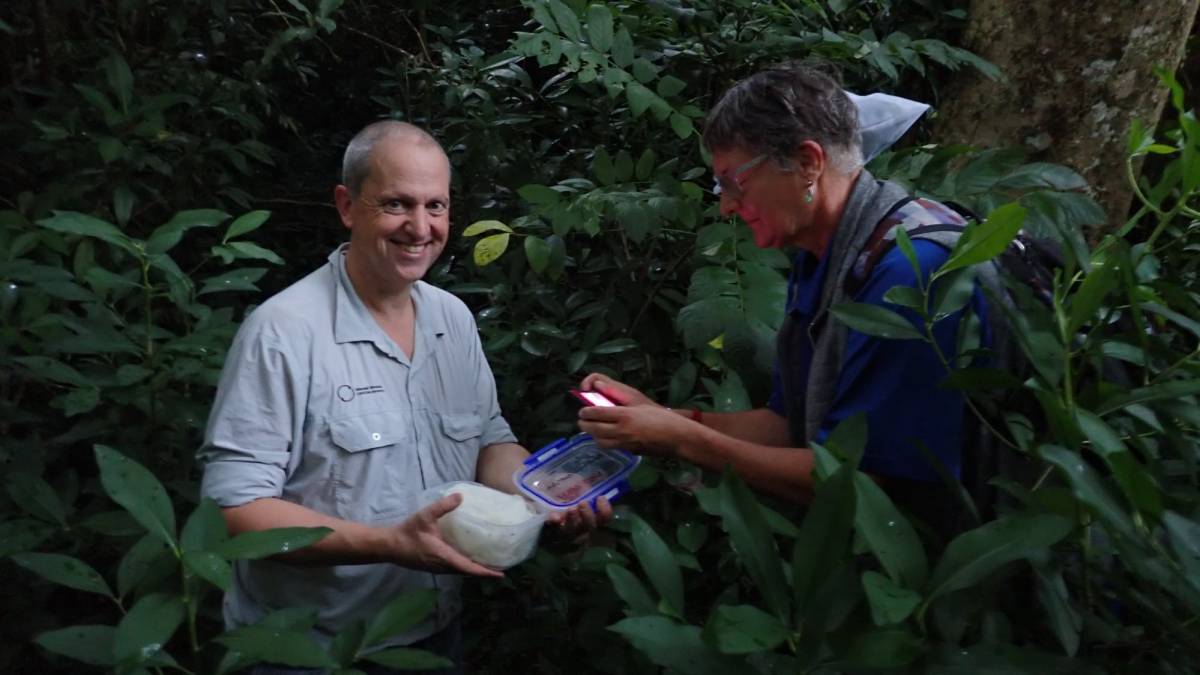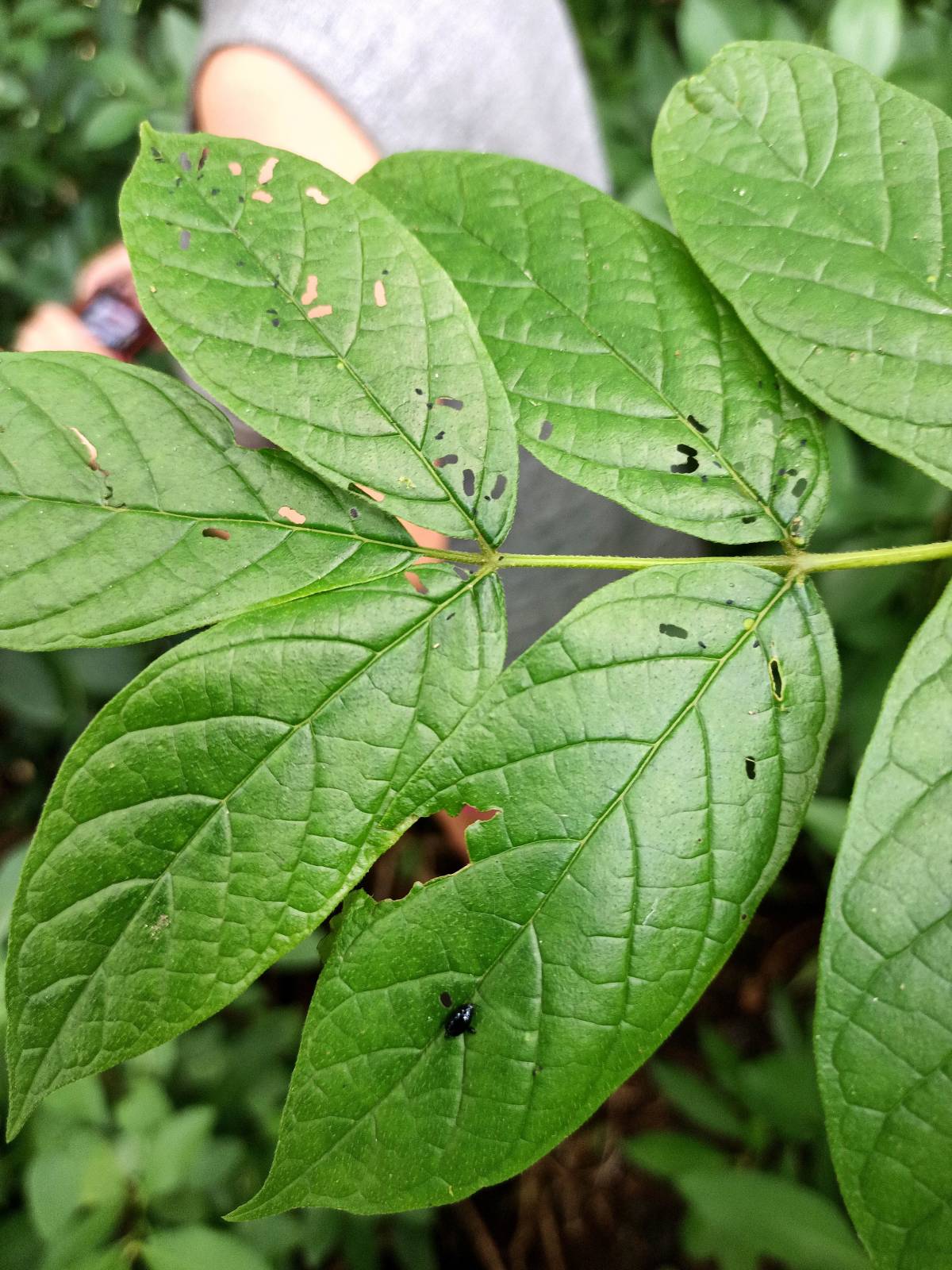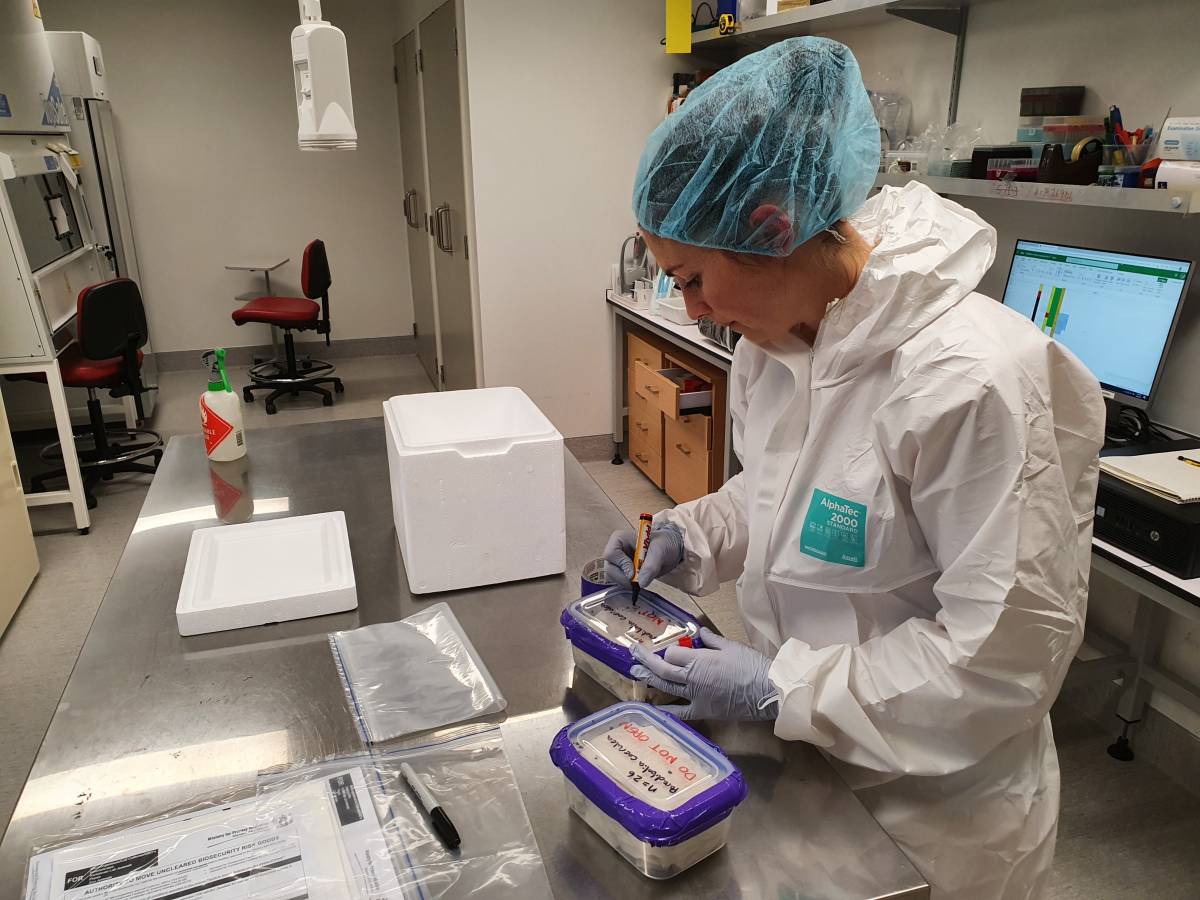The African tulip tree (Spathodea campanulata) is one of the world’s worst terrestrial invasive plants, and is a major problem throughout the Pacific region.

Invasive species like the African tulip tree can overwhelm ecosystems and make communities more vulnerable to natural disasters and the impacts of climate change, by destroying indigenous plant communities as well as competing for food production areas. In the Cook Islands, where the African tulip tree is a new invader, it is already an obvious threat to native forest on Rarotonga.
One of the few feasible and sustainable methods for managing invasive weeds like this tree is through the use of their natural enemies.
This is where the flea beetle comes in – on flights, accompanied by scientists from Manaaki Whenua Landcare Research (MWLR) in Aotearoa New Zealand.
The scientists had confirmed the African tulip tree flea beetle (Paradibolia coerulea) as a natural enemy to the African tulip tree, and one that poses no risk to other plant species. It is a specialist that feeds (as larvae and adults) only on the leaves of the African tulip tree.
Early signs positive

MWLR reared a population of the flea beetle in a containment facility in Auckland and when the Cook Islands travel bubble opened (June 2021), travelled with the beetles to Rarotonga. In partnership with the Cook Islands Ministry of Agriculture, MWLR scientists managed the release of the beetles.
The initial signs are positive, with early monitoring showing the beetles starting to damage African tulip tree leaves. Another round of monitoring to confirm the beetles are established is due now that travel restrictions are lifted again.
It is hoped the flea beetle will combine with a complementary natural enemy – the African tulip mite – already established on Rarotonga.
Our partners

The Ministry of Foreign Affairs and Trade partnered with the Secretariat of the Pacific Regional Environment Programme (SPREP)(external link), Manaaki Whenua Landcare Research(external link), and the New Zealand Department of Conservation(external link) on this work. It is part of the Pacific Regional Invasive Species Management Support Service(external link) (PRISMSS).
Other invasive weed targets for the Natural Enemies – Natural Solutions programme include the devil’s ivy (taro vine): a smothering pest whose spread and impact on Pacific food crops and indigenous ecosystems is likely to increase with climate change.
Watch a video on bio-control on Samoa here (3:29 mins)
Samoa officially rekindles its fight against invasive species by incorporating the NENS programme into its management efforts to control widespread invasive weeds in the country. Samoa joins the likes of Cook Islands, Tonga and Niue focusing initially on

